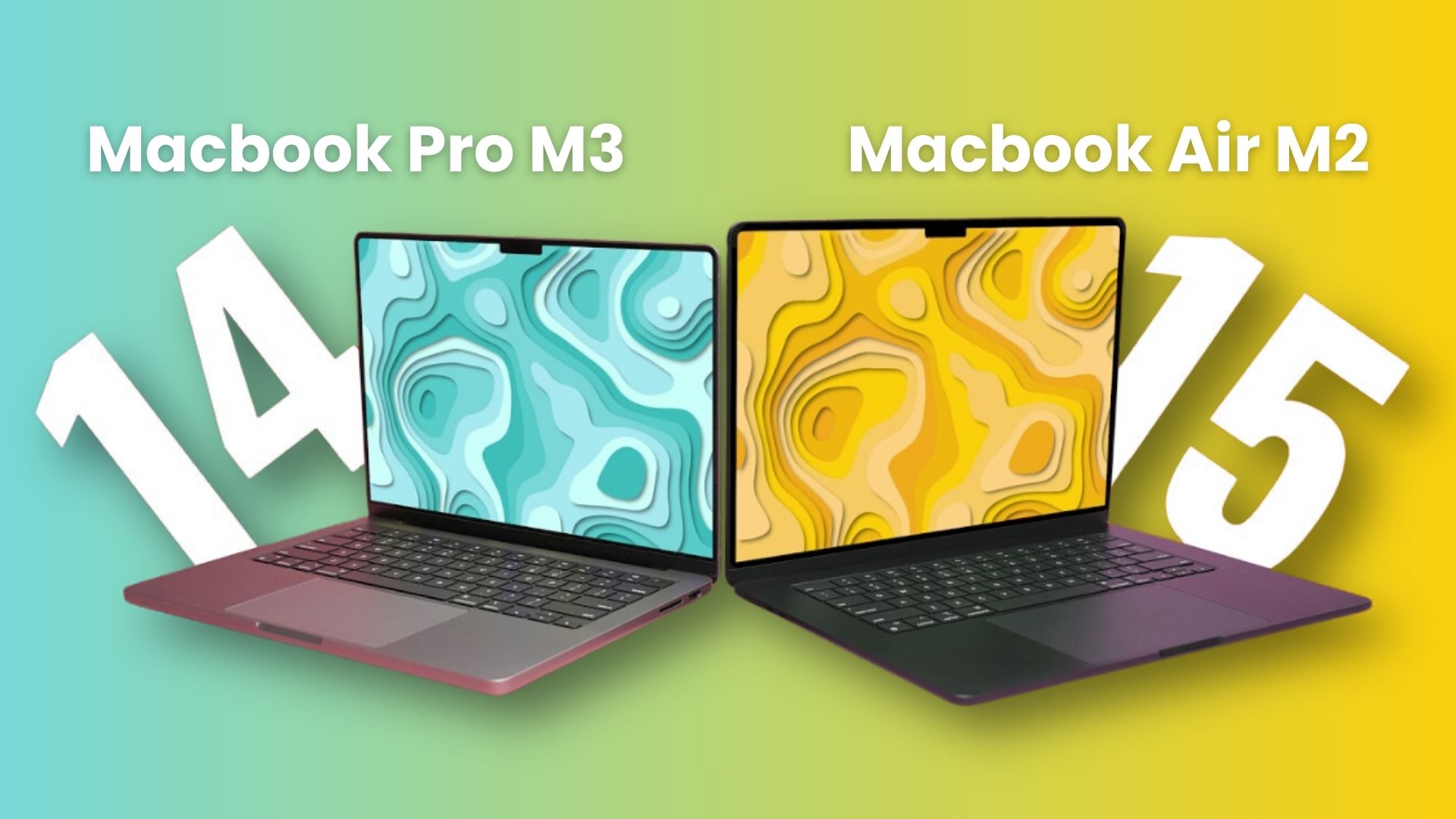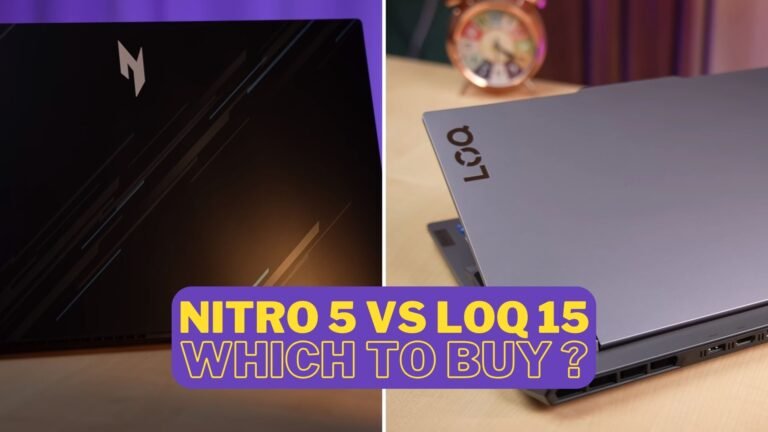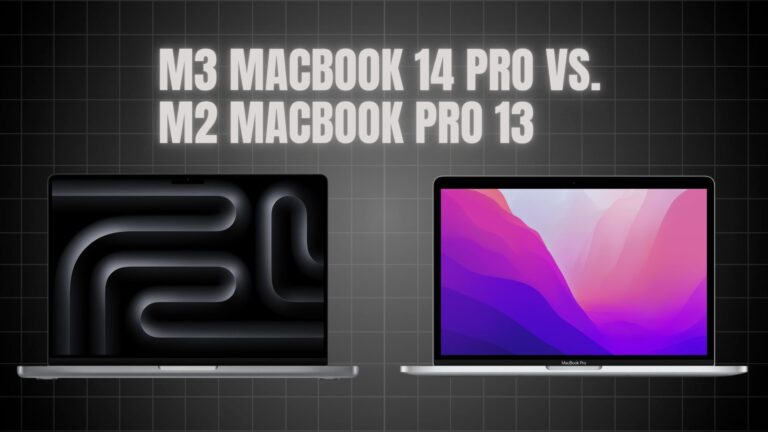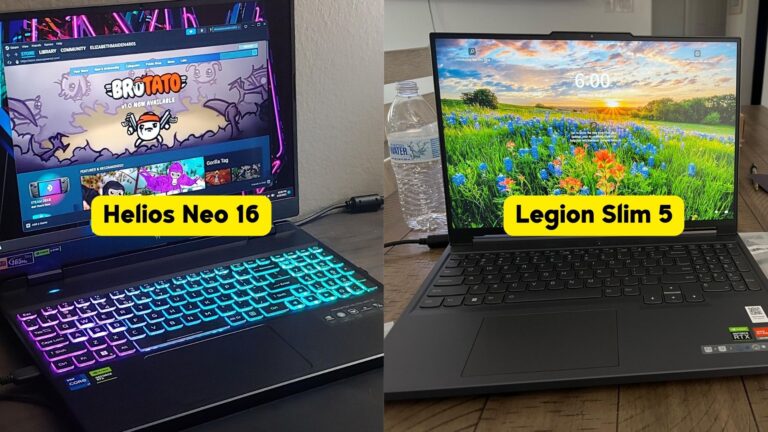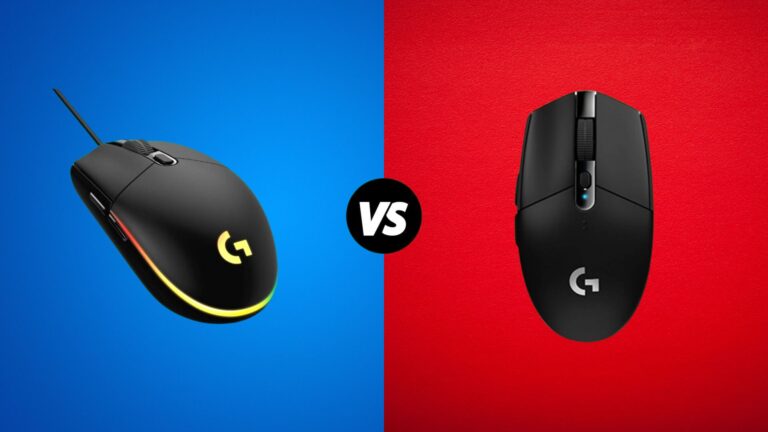Apple made this really tough.
On one hand, we have the entry-level 14-inch M3 MacBook Pro, priced at $1,600, packed with power and advanced features.
On the other, there’s the sleek, larger 15-inch M2 MacBook Air, known for its thin and light design.
It’s a tough decision, especially for the average user. Both have their unique strengths, and it’s not immediately clear which is the better option.
Let’s dive into the details and see if we can figure out which MacBook might be the best fit for your needs.
Quick Takeaway
| 15″ MacBook Air M2 | 14″ Macbook Pro M3 | |
| Design & Ports | – | – |
| Display & Features | ❌ | ✔️ |
| Keyboard & Trackpad | ✔️ | ❌ |
| Speakers | ❌ | ✔️ |
| Performance | ❌ | ✔️ |
| Battery Life | ❌ | ✔️ |
| Which is Better? | MacBook Air for sleek design & larger screen. | MacBook Pro for better performance & features. |
Specifications
| MacBook Air M2 | Macbook Pro M3 | |
| Dimensions | 13.40 inches x 9.35 inches by 0.45 inches | 12.31 inches x 8.71 inches x 0.60 inches |
| Weight | 3.3 pounds | 3.5 pounds |
| Processor | Apple M2 (8 cores) | Apple M3 (8-core) |
| Graphics | 10-core GPU | 10-core |
| RAM | 8GB 16GB 24GB | 8GB 16GB 24GB |
| Display | 15.3-inch 16:10 Liquid Retina IPS 2880 x 1864 | 14.2-inch 16:10 Liquid Retina XDR 3024 x 1964 |
| Storage | 256GB SSD 512GB SSD 1TB SSD 2TB SSD | 512GB SSD 1TB SSD 2TB SSD |
| Touch | No | No |
| Ports | 2 x USB-C with Thunderbolt 4 1 x 3.5mm audio jack | 2 x USB-C with Thunderbolt 4 1 x HDMI 2.0 1 x 3.5mm audio jack SD card reader |
| Wireless | Wi-Fi 6 and Bluetooth 5.3 | Wi-Fi 6E and Bluetooth 5.3 |
| Webcam | 1080p | 1080p |
| Operating system | MacOS Monterey | MacOS Monterey |
| Battery | 66.5 watt-hour | 70 watt-hour |
Design & Ports

As a tech enthusiast, I often find myself comparing the latest laptops, and recently I’ve been looking at the 15-inch MacBook Air and the 14-inch MacBook Pro. Both have a similar boxy design, but the Air is like a stretched, thinner version of the Pro.
The MacBook Air is larger in size but lighter, weighing only 0.1 pounds (about 40 grams) less than the MacBook Pro. Despite this small difference in weight, the Air feels incredibly light and portable, almost like an ultralight laptop. The Pro, on the other hand, feels more substantial due to its thickness.

When it comes to ports, there’s a noticeable difference.
The MacBook Air has two Thunderbolt 3/USB 4 ports and a MagSafe port on the left side, plus a headphone jack on the right. The MacBook Pro offers a bit more, with the same ports on the left but also an SDXC card reader and an HDMI port on the right. However, both laptops only allow charging and USB-C connections from the left side. If you need a USB-C port on the right, you’d have to upgrade to the MacBook Pro with the M3 Pro chip.
I personally appreciate the SDXC card reader on the MacBook Pro, as it saves me from carrying a separate card reader or hub. However, this might not be a big deal for everyone.
Both laptops support a single external display with up to 6K resolution at 60Hz using the Thunderbolt port. But the MacBook Pro also lets you connect to a 4K display at 120Hz through the HDMI port. To connect dual external displays, you’d again need the M3 Pro chip upgrade.
So, while both the MacBook Air and MacBook Pro have their unique features, the choice really comes down to your specific needs and preferences in terms of portability, connectivity, and display options.
Display & Features

First, the size difference: the MacBook Air sports a larger 15.3-inch display, while the MacBook Pro has a 14.2-inch screen. Interestingly, despite its smaller size, the MacBook Pro features thinner bezels, giving it a sleeker look.
The quality of the display is where the MacBook Pro really shines. It boasts a Liquid Retina XDR display, which is superior to the MacBook Air’s display. The Pro’s mini LED technology offers more dimming zones and deeper blacks compared to the Air’s LCD screen. The result? The Pro’s display is incredibly sharp with vibrant, crisp colors.
Resolution-wise, the MacBook Pro has a higher resolution than the Air. But due to the way scaling works, you might actually see more content on a webpage when using the MacBook Air. It’s an interesting point to note for those who prioritize screen real estate.
Brightness is another area where the MacBook Pro stands out. It’s 100 nits brighter for standard dynamic range (SDR) content and can reach up to 1,000 nits of sustained full-screen brightness, with a peak of 1,600 nits for high dynamic range (HDR) content. This makes a noticeable difference, especially as more content is being produced in HDR.
Both laptops have P3 displays supporting 1 billion colors, which is excellent for color accuracy. However, the MacBook Air is limited to a 60 Hz display, while the MacBook Pro features ProMotion technology. This adaptive refresh rate can vary from 24 Hz to 120 Hz, optimizing user experience and battery life. This feature is particularly beneficial for those who need fluid motion for tasks like video editing or gaming.
So, if you’re seeking the best display quality, the MacBook Pro is the clear winner. Its superior brightness, resolution, and adaptive refresh rate make it ideal for users who demand high-quality visuals.
Keyboard & Trackpad

Both models feature the same keyboard design, which is among the best available on laptops. Users often praise it for its comfort and responsiveness. The keys have a satisfying bounce, making typing a pleasant experience. Additionally, both keyboards include a full-height row of function keys and a Touch ID button, enhancing both functionality and security with biometric authentication.
Apple is renowned for its trackpad quality, often considered the best in the market. The trackpads on these MacBooks are no exception. They are super responsive, accurate, and allow clicking across the entire surface. The only significant difference is the size, with the 15-inch MacBook Air featuring a larger trackpad.
Lastly, a unique advantage of the MacBook Air is its typing comfort. Due to its larger palm rest area and thinner base, many users find typing on the Air to be slightly more comfortable than on the Pro.
Speakers

Now, let’s talk about the speaker systems. Both laptops feature a six-speaker sound system with force-canceling woofers, which is impressive. However, the design and performance of these systems differ slightly between the two models.
In the MacBook Air, the speakers are cleverly integrated into the hinge, making them less visible. This design choice is quite innovative and helps maintain the sleek appearance of the laptop. Despite their hidden nature, these speakers perform quite well, offering a good audio experience for a laptop.
The MacBook Pro, on the other hand, sticks to the more traditional design with speaker grills on each side of the keyboard. Apple describes this sound system as high-fidelity, and it’s not just a marketing claim. The audio quality on the MacBook Pro is noticeably superior. It delivers a fuller, warmer sound with more presence, enhancing the overall listening experience.
So, if the quality of the speakers is a crucial factor for you, the 14-inch MacBook Pro is the clear choice.
Performance
If you’re after the most powerful option, the MacBook Pro with the new M3 chip is your best bet. But don’t underestimate the MacBook Air – it’s got plenty of power for most users. Both the M2 chip in the Air and the M3 in the Pro have an 8-core CPU, with four cores for high performance and four for efficiency.

The M3 chip excels in single-core performance and continues to outperform in multi-core tasks. This is because both laptops have the same number of cores. With their 10-core GPUs, the Pro, as expected, comes out ahead again. Plus, the M3 chip includes hardware-accelerated ray-tracing.
If you’re a typical user, you probably won’t be pushing your MacBook to its limits all the time. The Air should be more than enough for everyday tasks. But if you’re into heavy-duty work like editing high-res photos in Lightroom, working with demanding video files, or using 3D applications, you’ll definitely appreciate the extra power and sustained performance of the MacBook Pro.
Battery Life
The MacBook Pro has a slightly larger battery (70 watt-hour) compared to the MacBook Air (66.5 watt-hour). Interestingly, both laptops are rated for 15 hours of wireless web browsing. However, for movie playback using the Apple TV app, the MacBook Air can last up to 18 hours, while the MacBook Pro offers up to 22 hours.
I think the longer movie playback time on the MacBook Pro might be due to its M3 chip’s new media engine, which supports AV1 decode. This feature seems to make video streaming more efficient and enhances the quality, thereby using less battery power.
In my day-to-day use, I find that I only need to charge both laptops every other day, or sometimes even less frequently. But the actual battery life varies depending on what I’m doing. For activities like watching movies, the MacBook Pro definitely lasts longer. Even for more intensive tasks like using Lightroom, Premiere Pro, or Final Cut Pro, the Pro outlasts the Air, especially when exporting images or rendering videos. This is because the MacBook Pro completes these tasks more quickly and efficiently, thanks to its more powerful chip.
Both MacBooks come with their own chargers. The MacBook Air includes a choice between a 35-watt dual USB-C port adapter or a 70-watt single port adapter. The MacBook Pro comes with a 67-watt adapter, which you can upgrade to a 96-watt adapter for an extra $20.
So, if you’re looking for a laptop with impressive battery life for both standard and heavy usage, the MacBook Pro is a great choice. But the MacBook Air also offers decent battery performance and should suffice for everyday tasks.
Which One You Should Buy?
Let’s break down the pricing of the MacBook Air and MacBook Pro, because there’s more to it than just the initial cost difference.
Starting with Apple’s standard prices, the MacBook Pro with the M3 chip offers 512 gigabytes of storage, while the MacBook Air with the M2 chip starts with 256 gigabytes. Upgrading the Air to 512 gigabytes would cost an extra $200.
I believe many users should consider opting for 512 gigabytes of storage on any MacBook. These laptops have powerful chips that will stay efficient for years, so it’s wise to have enough storage to match that longevity.
Regarding memory, the Air starts with 8 gigabytes, which is fine for basic tasks. However, I think the Pro should start with 16 gigabytes, given its powerful chip and potential for long-term use. Upgrading to 16 gigabytes of memory costs an additional $200 for either model.
So, when you consider these upgrades, the price gap between the two models narrows significantly.
Choosing between the 15-inch M2 MacBook Air and the 14-inch M3 MacBook Pro depends on what you value more. The MacBook Air offers a larger display and a thinner design. The MacBook Pro, though smaller, has a brighter and higher-quality display, double the internal storage, better speakers, and improved battery life for video streaming. It also offers more ports and an upgrade from Wi-Fi 6 to Wi-Fi 6E.
In summary, if you’re looking for a sleek design and a larger screen, the MacBook Air is a great choice. But if you want better performance and features, and are willing to pay a bit more, the MacBook Pro is the way to go.
